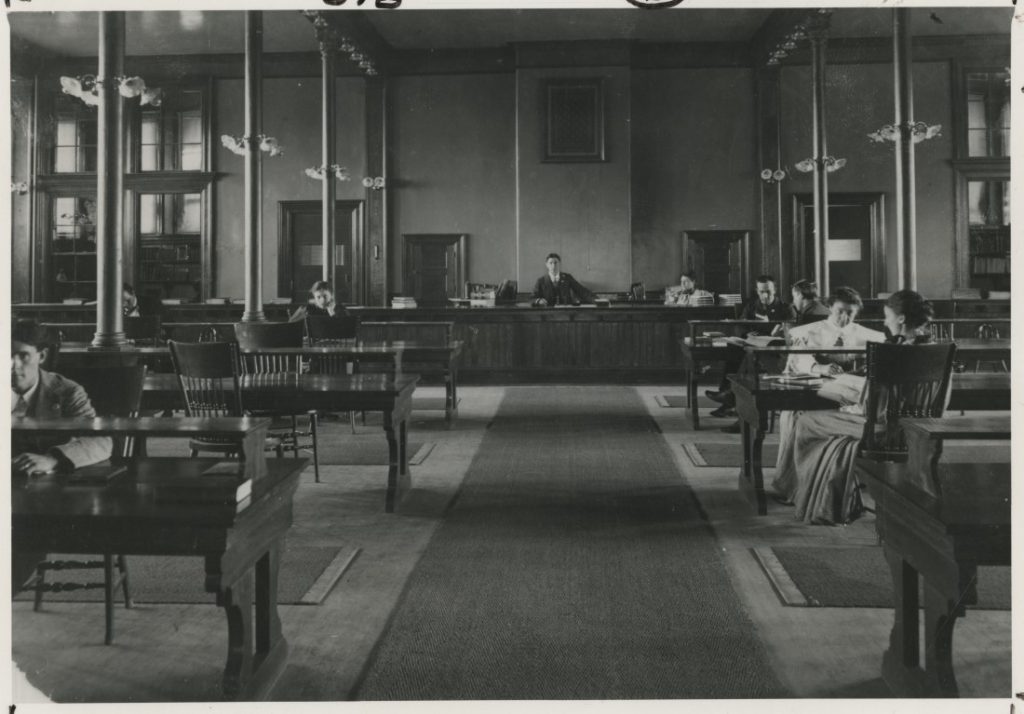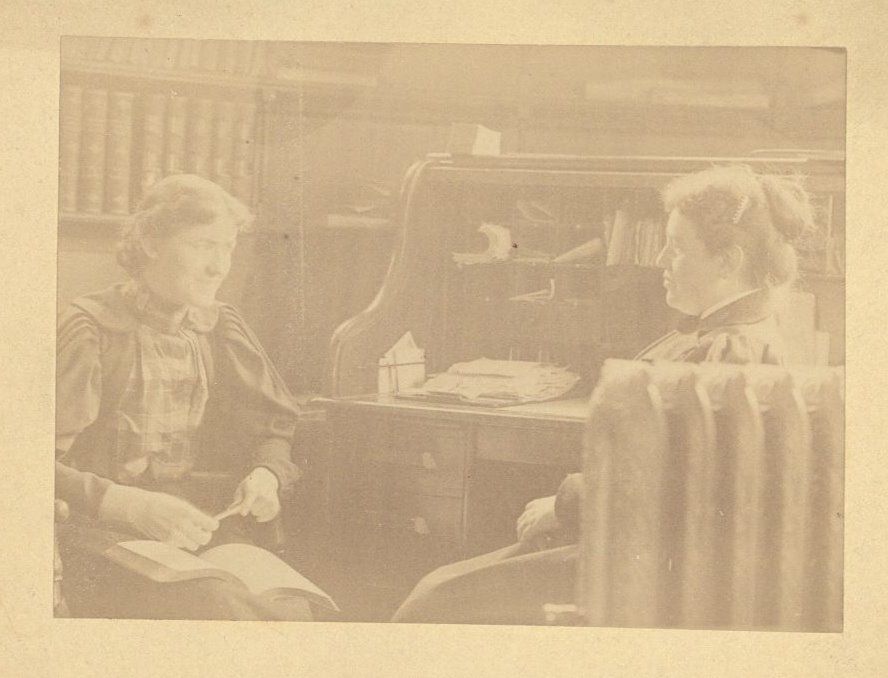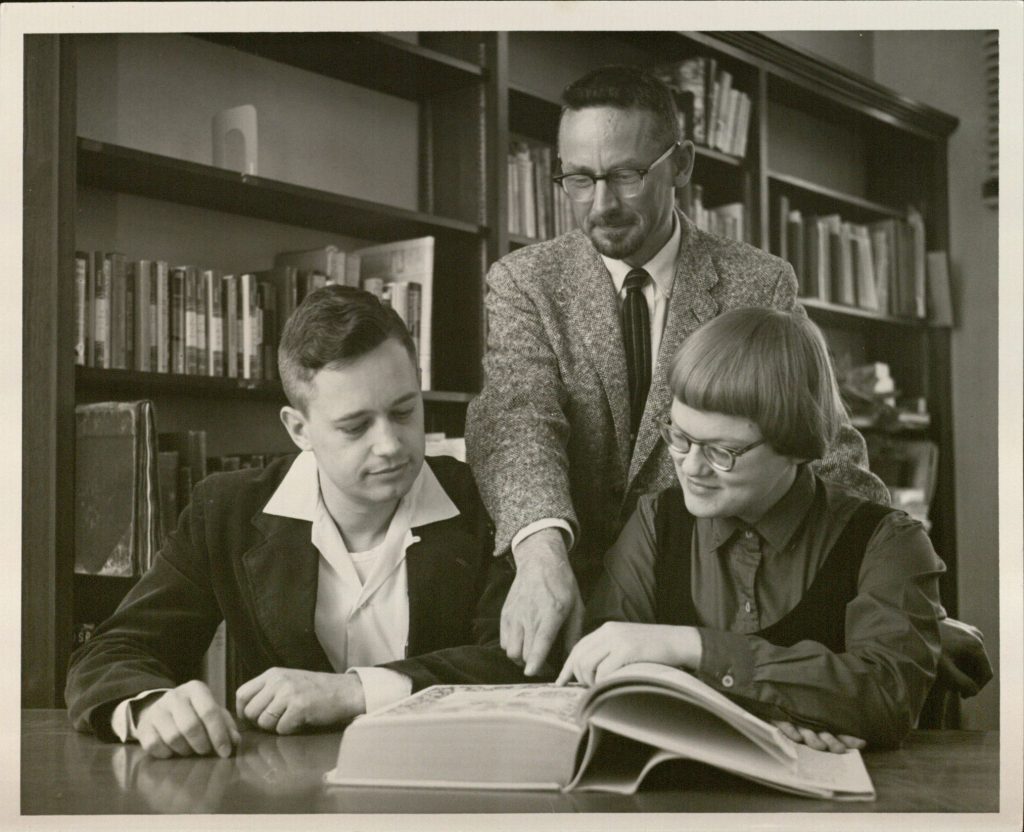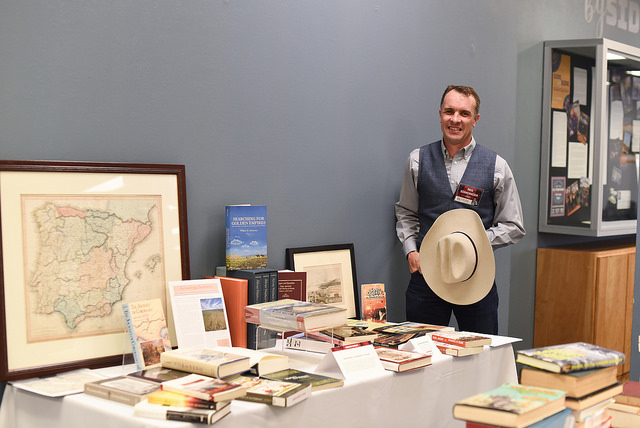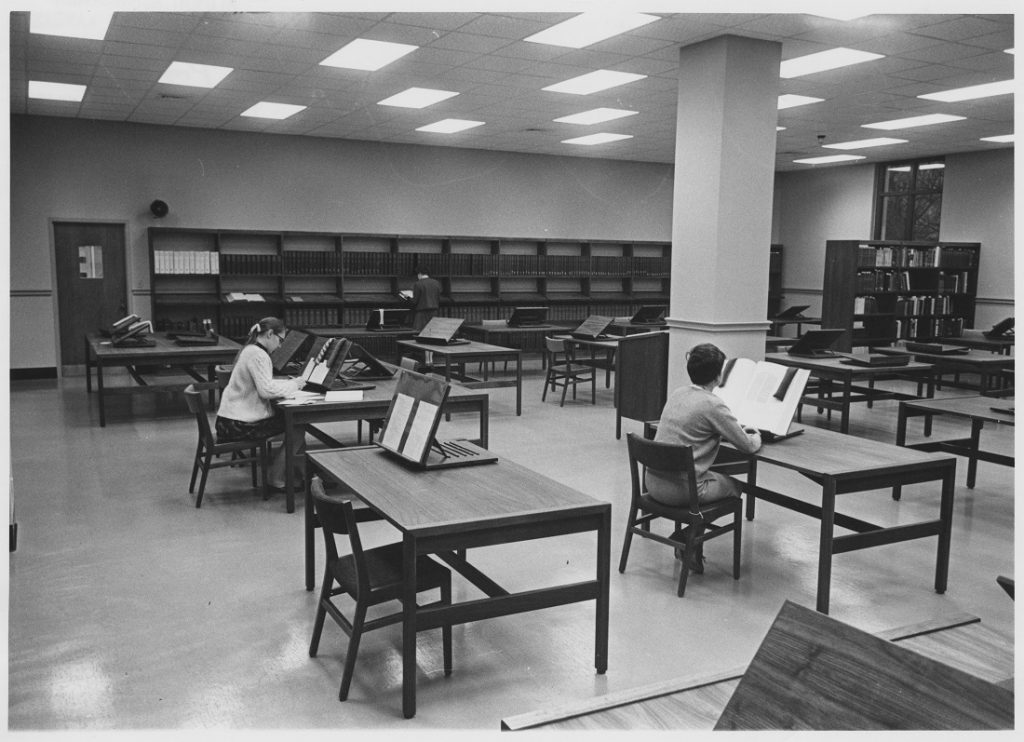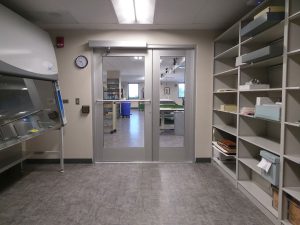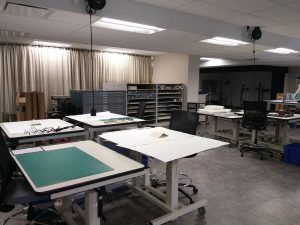Remembering William “Bill” Mitchell (1932–2023)
November 7th, 2023Kenneth Spencer Research Library has many faces working behind the scenes to maintain its collections and provide patrons with access to these materials. William Lawrence “Bill” Mitchell was one of these many faces, working with the Department of Special Collections. He served in various capacities at KU Libraries from 1967 to 1999. Both William and his wife Virginia Jean Mitchell died in March of this year.

William Mitchell was born on June 2, 1932, in Kansas City, Missouri, the son of William M. and Donna L. Mitchell. Before he joined the University of Kansas, Mitchell served in the United States Coast Guard from 1952 to 1956. He received his bachelor’s degree from KU in 1959 and then received his master’s degree in library science from the University of Illinois in 1960.
Mitchell’s work in libraries started before his master’s degree. Joining KU Libraries in 1957 as a student assistant for special collections, Mitchell worked his way through various library positions. He became a cataloger with KU in 1971 and eventually became chief cataloger. Mitchell’s work was well received; he earned membership in Beta Phi Mu, an honor society that recognizes high achievement in library science and librarianship. He was promoted to the rank of Librarian III in 1967, a marker of his distinguished career as a librarian.
Special Collections weren’t Mitchell’s only interest. He often encouraged work with bibliography and advocated for the conservation of unstable library materials. He led several courses on conservation for KU’s Museum Studies program and, on occasion, spoke with history of the book classes. His interests in conservation covered a wide variety of materials, from the proper preservation of textual materials and bindery techniques to film preservation. He often kept interesting paper ephemera he came across – usually from other bookstores or vintage postcards – to preserve the history of his travels and work. Many of these postcards and syllabi can be found in his personal papers collection.

Mitchell’s love of preservation extended beyond KU and into surrounding communities. He consulted with several other libraries in the state, including at Kansas State University, Baker University, Saint Mary College, and the Wichita Public Library. He worked with the Dwight D. Eisenhower Presidential Library to save a letter from General Dwight Eisenhower that was sent to a family member. Mitchell presented at several library conferences and attended various conservation group meetings to bring further awareness on the necessity of conservation efforts.
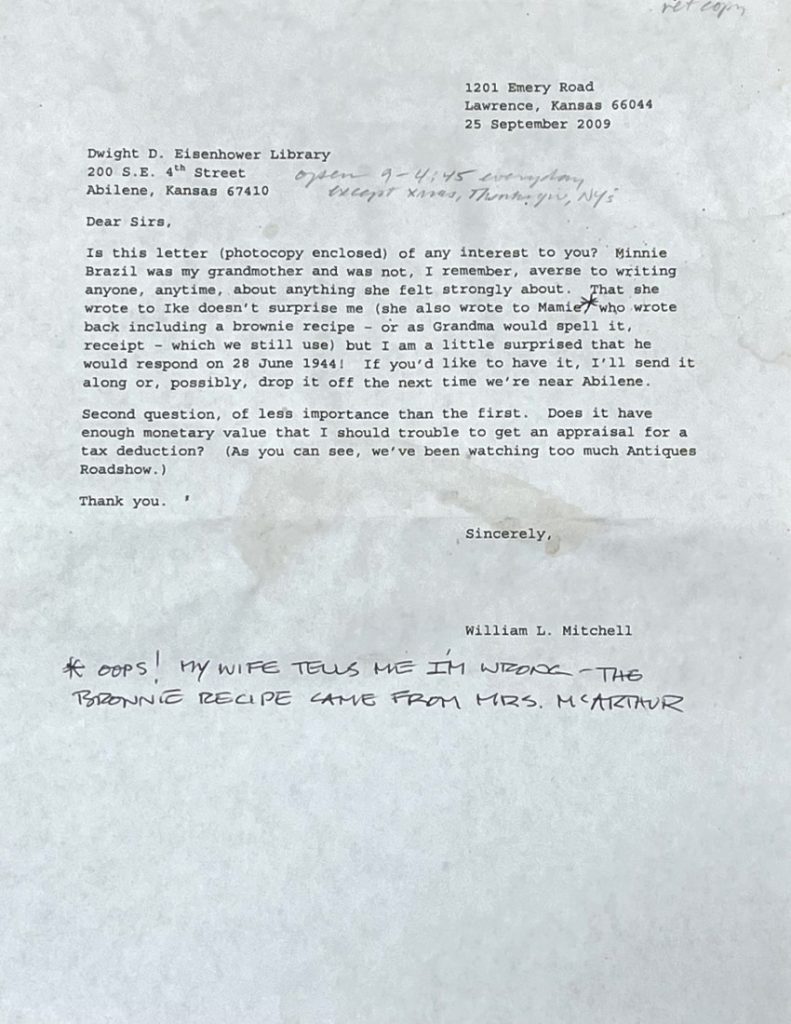

Lawrence, Kansas, also had a special place in Mitchell’s life. He was a vocal historical building advocate, writing many letters to the Lawrence Journal-World with his concerns for historic Lawrence buildings regarding new proposed commercial developments. He wrote to the Lawrence Preservation Alliance and worked alongside the organization to protect a historic livery stable that was threatened by commercial development. But he was perhaps the most interested in preserving the history of West Hills, a neighborhood northwest of the University of Kansas campus. Many of his writings surround this neighborhood, from notes on traffic to rezoning laws allowing commercial enterprises to develop in the West Hills neighborhood.
Mitchell was not the only Mitchell with high accomplishments; his wife Jean was a notable quilter and one of her quilts, “Bill Willie’s Whirlygig Factotum,” documents Mitchell’s work and life. Her quilts were once exhibited at the Helen Foresman Spencer Museum of Art, and the exhibit was digitally archived.
William Mitchell retired from Spencer Research Library in 1999, though the Mitchells remained in Lawrence after retirement. Both Bill and Jean Mitchell supported Kenneth Spencer Research Library and the Helen Foresman Spencer Museum of Art; William’s papers were donated to the library in 2013, and Jean’s quilts and textiles are housed at the museum. Mitchells’ legacy continues on with The Bibliographical Society of America’s William L. Mitchell Award, given to researchers whose research focuses on eighteenth century English or English colonial periodicals.
Molly James
Manuscripts Processor



